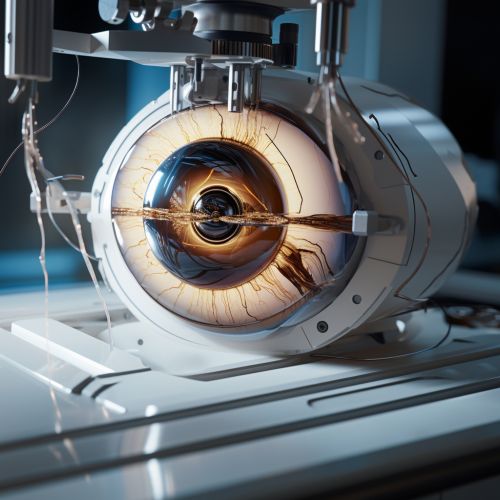Ophthalmic Imaging
Introduction
Ophthalmic imaging is a highly specialized area of medical imaging dedicated to the study and treatment of disorders of the eye. It covers a wide range of techniques, including fundus photography, optical coherence tomography (OCT), fluorescein angiography (FA), and B-scan ultrasonography. These imaging modalities provide valuable information for the diagnosis, management, and treatment of various ocular diseases.


Fundus Photography
Fundus photography involves capturing a photograph of the back of the eye, i.e., the fundus. This includes the retina, optic disc, macula, and posterior pole (the back part of the eye). Fundus photography can be performed with colored filters, or with specialized dyes including fluorescein and indocyanine green.
Optical Coherence Tomography
Optical coherence tomography (OCT) is a non-invasive imaging technique that uses light waves to take cross-section pictures of the retina. OCT provides detailed images of the retina's distinctive layers, helping ophthalmologists to map and measure their thickness. These measurements can help with diagnosis and provide treatment guidance for glaucoma and diseases of the retina.
Fluorescein Angiography
Fluorescein angiography (FA) is a procedure that uses a special camera to take pictures of the retina and choroid. A dye called fluorescein is injected into a vein in the arm. The dye travels through the blood vessels in the body, including those in the eyes. This allows the ophthalmologist to see and photograph the blood flow in the back of the eye.
B-scan Ultrasonography
B-scan ultrasonography is a diagnostic procedure used to produce a two-dimensional, cross-sectional view of the eye and the orbit. It is typically used when the view into the eye is obscured, such as by cataract or hemorrhage. B-scan ultrasonography can help diagnose a variety of eye conditions and is particularly useful in diagnosing retinal detachment.
Conclusion
Ophthalmic imaging is a vital tool in the diagnosis and management of a wide range of eye conditions. These imaging techniques provide detailed views of the eye, allowing for accurate diagnosis and effective treatment planning. As technology advances, the capabilities of ophthalmic imaging continue to expand, offering even greater insights into the structure and function of the eye.
